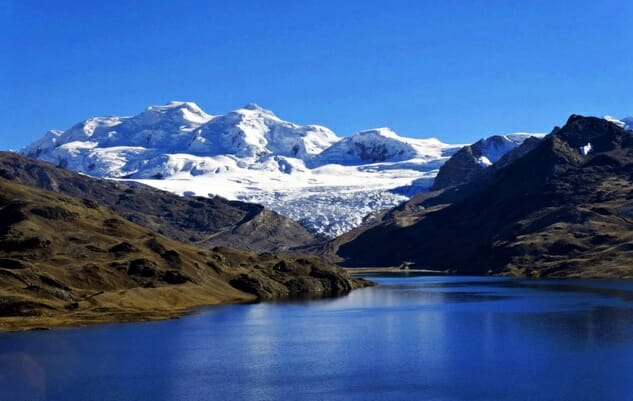Warming Signs: Would Painting Everything White Make the Planet Cooler?

Often, when we talk about climate change, it seems like a far-off scenario. We talk in terms of saving the planet for future generations and predict disruptive sea level rise within the century. But the effects of climate change are already felt around the world; future changes will only intensify them.
![]()
High up in the Peruvian Andes, where a glacier used to stretch across the slopes of the Ayacucho region, one man made it his personal mission to bring back ice. It was an ambitious goal, to be sure, but even wackier was his plan: He would paint the peaks white.
Eduardo Gold founded Glaciares Peru in 2008 on his own dime, but a year later the NGO was selected as a winner of the World Bank’s 100 Ideas to Save the Planet competition—bringing with it prize money to continue the efforts.
But Gold’s mission wasn’t to restore the mountain or even simply to bring better water access to his community, although those were major perks. He also hoped to make a big impact on climate change. As Glaciares Peru’s Otto Gold told CNN, “We are hoping to lower the temperature on the surface of the rocks from 20 degrees Celsius to five.”
But how exactly does painting a mountain white help climate change?
Gold was tapping into something called albedo—a measure of how much solar energy a surface reflects. It’s the same reason dark clothes make us sweat more in the summer, and why it’s cooler to walk on painted lines than on dark asphalt on hot days. Dark colors absorb heat while lighter colors reflect it.
 National Snow and Ice Data Center
National Snow and Ice Data Center
I discussed albedo in my column on why Arctic ice is so important, but its effects occur all over the globe. Snow, ice, and water all reflect sunlight to varying degrees—as do landscapes with lighter colors, as with Gold’s mountain. Albedo is measured on a scale of zero to one, with zero meaning a surface will completely absorb the sun’s rays and one indicating the surface will reflect all incoming solar radiation.
For instance, snow-covered sea ice has an albedo of 0.9. That means it reflects 90 percent of the sun’s rays—pretty impressive, and just one of the reasons sea ice is so important to global climate systems. The open ocean, on the other hand, has an albedo of 0.06; it absorbs nearly everything.
Clouds also have albedo. The high-albedo cloud cover on Venus, in fact, is why the star shines so brightly in our skies. Although less is known about how cloud formation affects (and is affected by) climate change on our planet, a recent study indicates that clouds have moved closer to the North and South Poles, resulting in “widespread reductions in albedo.”
-

-

-

-

-

-

-

-

-

-

-

-

-

-

-

-

-

-

-

-

-

-

-

-

-

-

-

-

-

-

-

-

-

-

-

-

-

-

-

-

 Photo by
Photo by 






































